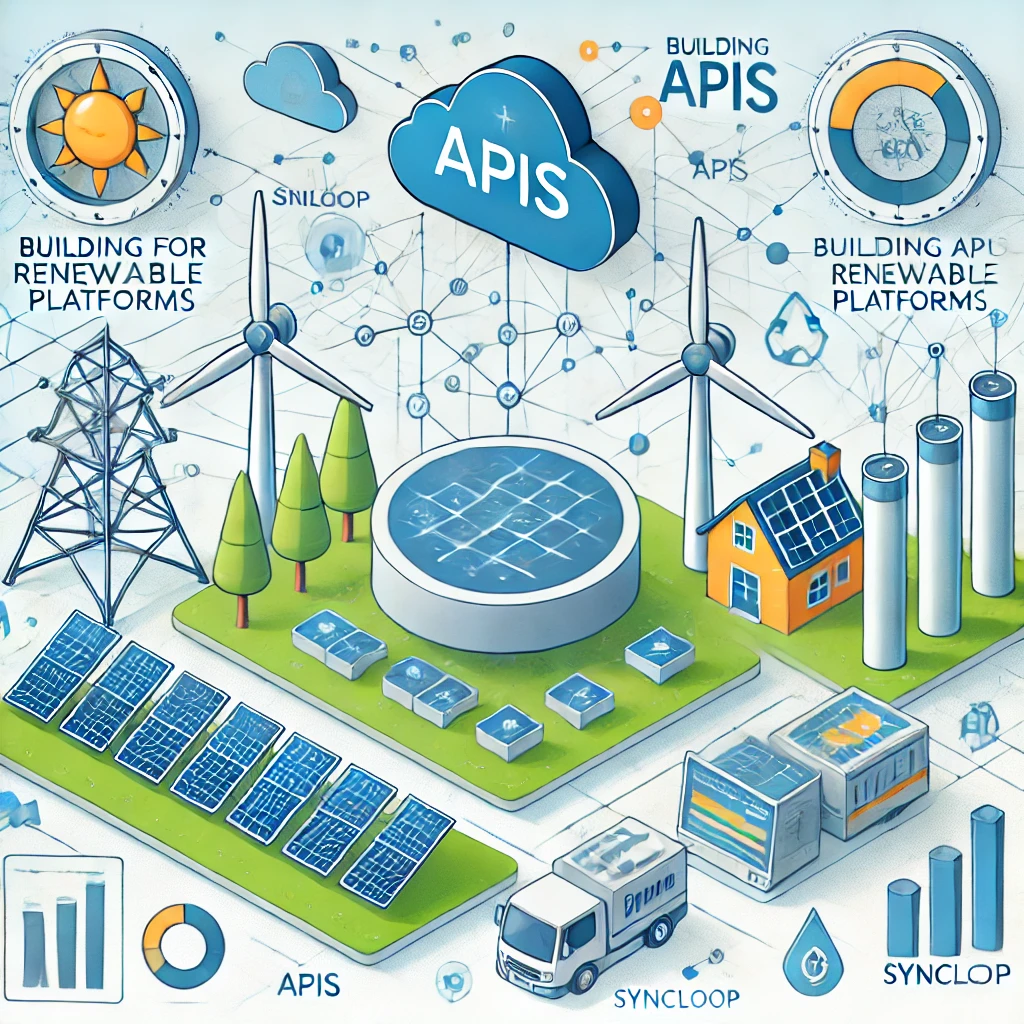Building APIs for Renewable Energy Platforms Using Syncloop

Why APIs Are Essential for Renewable Energy Platforms
APIs facilitate:
- Data Integration: Connect energy systems, sensors, and external data sources.
- Real-Time Monitoring: Track energy production, consumption, and storage status instantly.
- Scalability: Support growing infrastructure and diverse energy sources.
- Predictive Analytics: Enable data-driven decisions for optimizing energy use and distribution.
- Interoperability: Ensure compatibility across various hardware and software systems.
Syncloop provides the tools to achieve these goals efficiently and securely.
Key Features of Syncloop for Renewable Energy APIs
1. Real-Time Data Processing
Handle live data streams from energy sources for immediate insights and control.
2. Dynamic Workflow Automation
Automate tasks like data collection, transformation, and system notifications.
3. Data Transformation
Normalize and enrich data from multiple energy systems for compatibility and analysis.
4. Scalable Infrastructure
Manage large-scale energy networks with Syncloop’s dynamic scaling capabilities.
5. Secure Data Handling
Protect sensitive energy data with encryption and role-based access controls.
6. Monitoring and Alerts
Track API performance and set up real-time alerts for anomalies or system failures.
Steps to Build Renewable Energy APIs with Syncloop
Step 1: Define System Requirements
- Identify key functionalities, such as:
- Energy data collection and storage.
- Real-time visualization of energy production and consumption.
- Control interfaces for energy devices like inverters and batteries.
- Outline integration points with third-party services, such as weather data or grid management systems.
Step 2: Design API Endpoints
- Create endpoints for essential operations, including:
- /energy/production for tracking energy generation metrics.
- /energy/consumption for monitoring usage patterns.
- /alerts for system notifications and warnings.
- Ensure endpoints support standardized formats like JSON or XML.
Step 3: Automate Data Workflows
- Use Syncloop’s workflow designer to:
- Collect data from sensors and energy devices.
- Transform raw data into analytics-ready formats.
- Trigger alerts based on predefined thresholds or anomalies.
- Incorporate Transformers to handle data normalization and enrichment.
Step 4: Implement Real-Time Processing
- Configure real-time workflows to:
- Push live updates to monitoring dashboards.
- Enable immediate responses to critical events like equipment malfunctions.
- Use Syncloop’s event-driven architecture for low-latency data handling.
Step 5: Monitor and Optimize APIs
- Use Syncloop’s monitoring tools to:
- Track API usage metrics and identify performance bottlenecks.
- Analyze energy trends and system efficiency.
- Set up alerts for issues such as data transmission failures or unexpected energy spikes.
Step 6: Secure API Interactions
- Implement token-based authentication and role-based access controls to secure endpoints.
- Encrypt all data transmissions to protect against unauthorized access and breaches.
Real-World Applications
1. Smart Grids
- Use Case: Monitor and manage distributed energy resources like solar panels and wind turbines.
- Features Used: Real-time processing, workflow automation, scalable infrastructure.
2. Home Energy Management
- Use Case: Enable homeowners to track energy usage and optimize power consumption.
- Features Used: Data transformation, real-time monitoring, secure APIs.
3. Energy Trading Platforms
- Use Case: Facilitate peer-to-peer energy trading between producers and consumers.
- Features Used: Dynamic workflows, secure transactions, API monitoring.
4. Renewable Energy Analytics
- Use Case: Provide insights into energy production and consumption trends.
- Features Used: Data integration, real-time analytics, monitoring tools.
Best Practices for Renewable Energy APIs
- Ensure Scalability: Use Syncloop’s dynamic scaling to handle growing energy networks.
- Prioritize Security: Protect data with robust encryption and strict access controls.
- Standardize Data: Normalize input from diverse sources for compatibility and analytics.
- Monitor Continuously: Use real-time insights to optimize API performance and reliability.
- Integrate Predictive Tools: Incorporate machine learning models for forecasting and optimization.
Why Choose Syncloop for Renewable Energy APIs?
Syncloop provides a comprehensive platform for building scalable, secure, and efficient APIs tailored to the renewable energy sector. Its features for workflow automation, real-time processing, and monitoring ensure that energy platforms can meet modern challenges effectively.
Conclusion
Renewable energy platforms require robust APIs to integrate systems, enable real-time monitoring, and optimize performance. Syncloop simplifies the development and management of these APIs, helping organizations unlock the full potential of renewable energy systems. By leveraging Syncloop, developers can create innovative solutions that drive sustainability and efficiency.
Back to Blogs